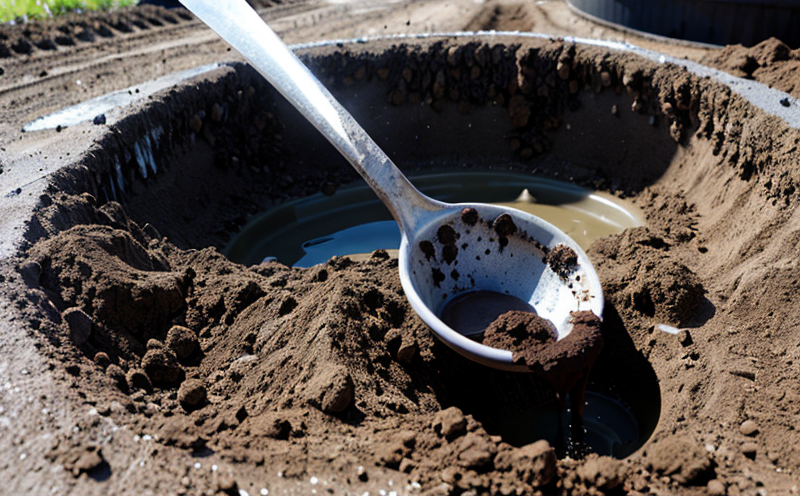ASTM E1440 Microbial Bioassay of Sludge Extract Test
The ASTM E1440 standard provides a method to determine the toxicity and biodegradability of sludge extracts. This bioassay is particularly useful for assessing the potential impacts on aquatic ecosystems, as well as the safety and environmental compatibility of biosolids and other waste materials before they are applied or landfilled.
The process involves extracting a sample from the sludge using a defined solvent system, which typically includes methanol and water. The extract is then tested for its toxicity towards microorganisms in a controlled laboratory setting. This bioassay helps to predict whether the sludge might negatively affect aquatic life if applied or discharged into the environment.
The ASTM E1440 method ensures that the test conditions are consistent with industry standards, providing reliable data on the biodegradability and toxicity of the material being tested. This is crucial for regulatory compliance and ensuring the safety of both workers handling the sludge and the public who may be exposed to its potential environmental impacts.
The bioassay measures several key parameters including the 5-day inhibition concentration (C5) which indicates the concentration at which there is a 90% reduction in microbial growth. The results from this test are essential for understanding how sludge extracts might affect aquatic organisms and whether they meet regulatory standards.
For quality managers, compliance officers, R&D engineers, and procurement teams involved in water & wastewater testing, the ASTM E1440 bioassay is a critical tool that helps ensure environmental safety and regulatory compliance. The test results provide insights into the potential impacts of sludge on aquatic ecosystems, helping to guide decisions regarding its safe handling and disposal.
The methodology described in ASTM E1440 ensures consistency and accuracy across different laboratories performing this type of testing. This is particularly important given the variability that can exist between different types of sludge and their composition. By adhering to standardized procedures, labs can ensure that their test results are comparable and reliable.
The bioassay also helps in identifying potential risks associated with the application or discharge of biosolids into the environment. This information is invaluable for environmental scientists and engineers working on projects related to wastewater treatment and soil remediation.
In summary, the ASTM E1440 microbial bioassay of sludge extract test provides a robust framework for assessing the toxicity and biodegradability of waste materials like biosolids. Its importance lies in its ability to provide accurate data that can inform decisions about safe handling and disposal practices, ultimately contributing to better environmental stewardship.
Applied Standards
| Standard | Description |
|---|---|
| ASTM E1440-18 | This standard specifies the procedure for performing a microbial bioassay to determine the biodegradability and toxicity of sludge extracts. |
| ISO 9268 | An international standard that provides guidelines on the use of bioassays in assessing the biodegradability of organic matter. |
| EN ISO 17025 | This standard sets out requirements for competence of a testing and calibration laboratory. While not directly related to ASTM E1440, it ensures that laboratories performing such tests are compliant with international quality standards. |
International Acceptance and Recognition
The ASTM E1440 standard is widely recognized across various sectors including environmental engineering, wastewater treatment, and solid waste management. Its acceptance by regulatory bodies worldwide ensures that the results generated from this bioassay are valid and can be used for compliance purposes in multiple countries.
Many countries have adopted ASTM standards as part of their national regulations or guidelines. For instance, the U.S., Canada, and several European Union member states recognize ASTM E1440 as a key standard for evaluating sludge extracts. This recognition enhances the reliability and acceptance of test results internationally, facilitating cross-border trade in waste management products.
Regulatory agencies such as the United States Environmental Protection Agency (EPA) and similar bodies in other nations often require compliance with ASTM E1440 when issuing permits or approvals for sludge applications. This ensures that all stakeholders involved in handling and disposing of biosolids are using consistent, scientifically validated methods to assess potential environmental impacts.
The international acceptance of ASTM E1440 also promotes best practices in waste management by encouraging the use of standardized testing procedures. As a result, industries and municipalities can have confidence in the data generated from this bioassay, leading to more informed decision-making processes regarding sludge utilization and disposal.
Use Cases and Application Examples
The ASTM E1440 microbial bioassay finds application in various sectors where the biodegradability and toxicity of sludge extracts need to be evaluated. Here are some key use cases:
Environmental Impact Assessment (EIA): This test is commonly used during the planning stages of wastewater treatment facilities or landfills to assess the potential environmental impacts of biosolids before they are applied or discharged.
Regulatory Compliance: Regulatory bodies often require compliance with ASTM E1440 standards as a condition for issuing permits. This ensures that all sludge handling practices meet stringent environmental protection requirements.
Research and Development (R&D): In R&D settings, the results from ASTM E1440 can inform product development processes by identifying areas where improvements are needed to enhance biodegradability or reduce toxicity.
Solid Waste Management: For facilities involved in solid waste management, this test helps in optimizing recycling and composting processes by ensuring that sludge extracts do not pose a risk when used as soil amendments.
Public Health: By assessing the biodegradability and toxicity of sludge extracts, public health officials can better understand potential risks associated with wastewater reuse projects or land application practices.
The ASTM E1440 bioassay plays a crucial role in ensuring that waste management practices are both safe and sustainable. Its widespread use across industries reflects its importance as a tool for environmental protection and compliance.





